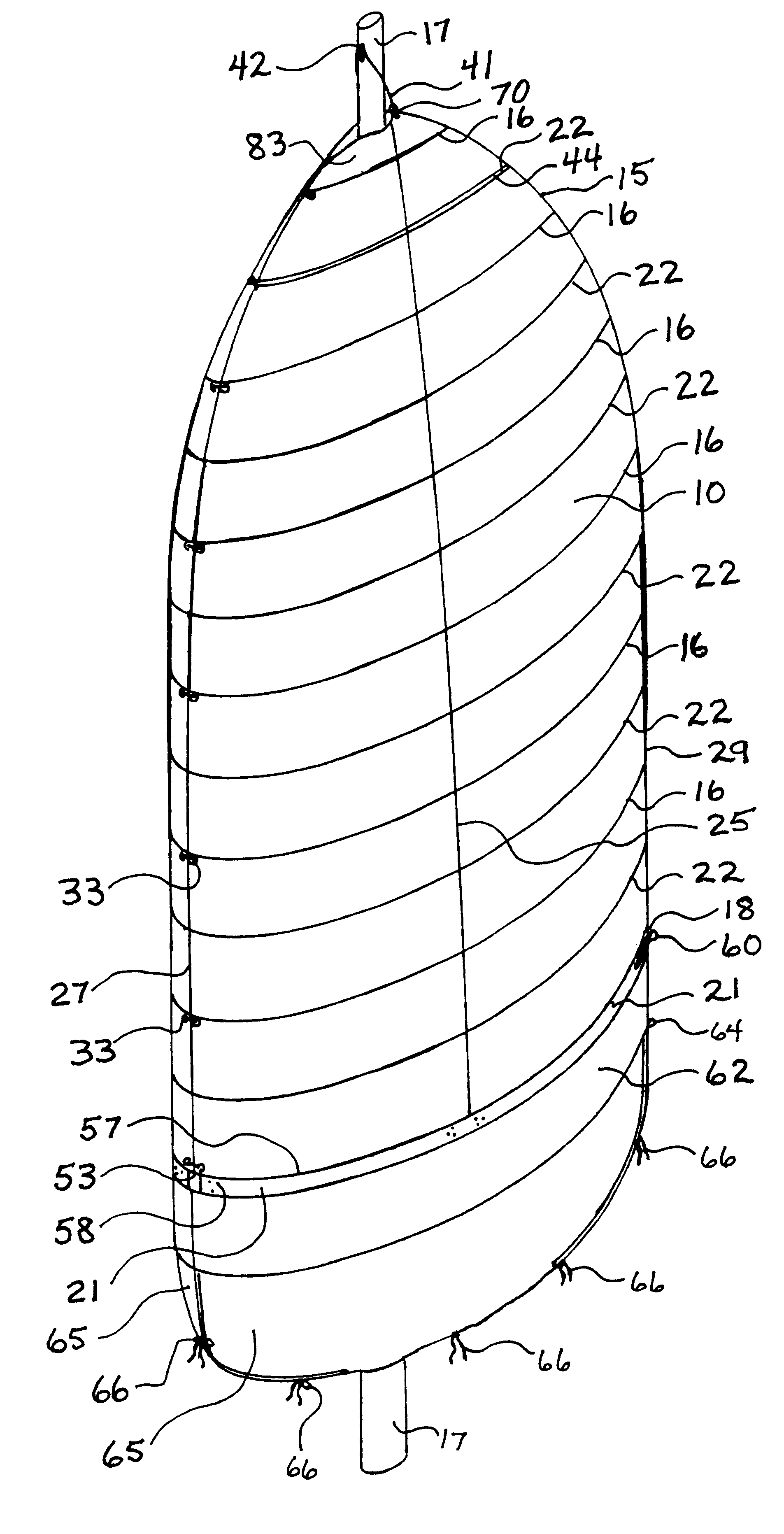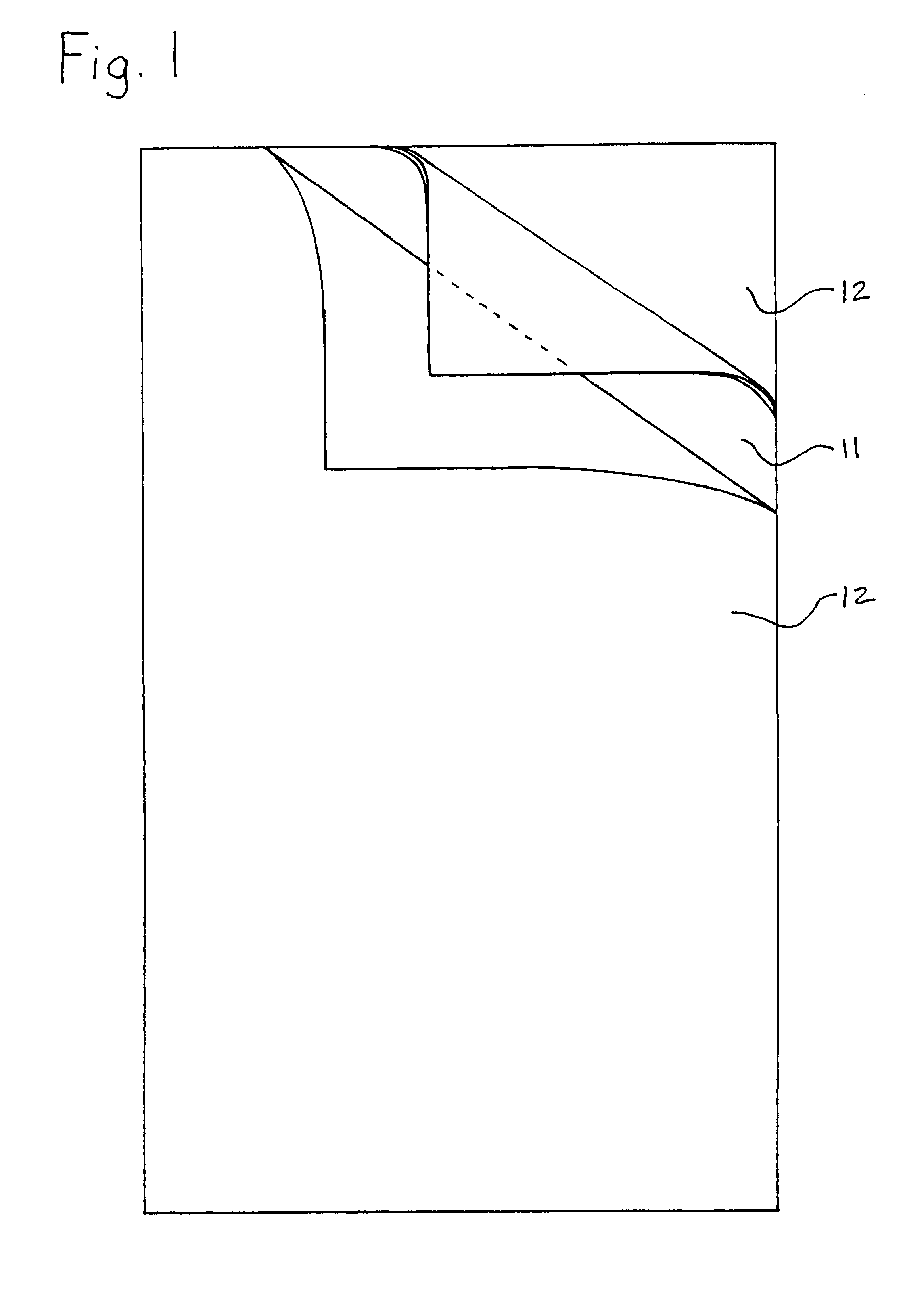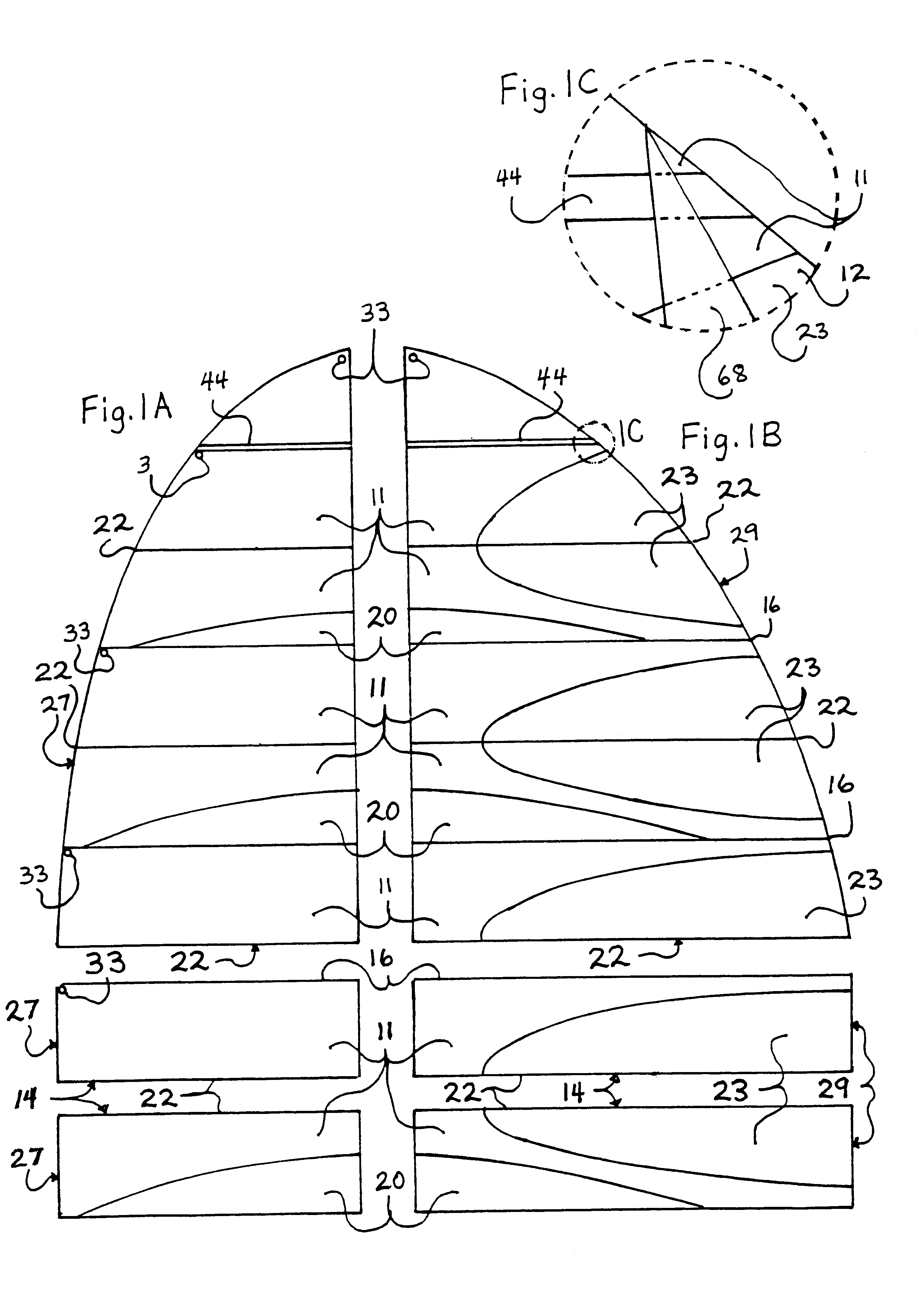Stowable semi-rigid wing sail system
a semi-rigid, wing sail technology, applied in the field of sails, can solve the problems of not being safe to use, not easy to adjust the shape of the most powerful sail, and the common sail is not easy to use, so as to achieve convenient adjustment of the shape, free up space, and reduce the cost
- Summary
- Abstract
- Description
- Claims
- Application Information
AI Technical Summary
Benefits of technology
Problems solved by technology
Method used
Image
Examples
Embodiment Construction
Drawing Sheets 1 thru 15--Preferred Embodiment
The stowable wings' semi rigid sail panels (FIG. 1) 10 are produced with a thin foam core 11. The closed cell foam cores' material is "noncrosslinked polyvinyl chloride foam". The PVC foam core is known by its trademarked name as Airex, and is available from Torin Inc., 9 Industrial Park, Waldwick, N.J. 07463. The core has a memory shape characteristic, after bending it returns to its original shape. These sail panels' interior and exterior surfaces are laminates of "lightweight sail makers' materials" 12. The laminated sailcloth provides a smooth, durable surface that is ultraviolet protection for the core. The strength of the individual panel materials is increased substantially by lamination. This allows the decrease in the thickness and weight of the materials, required for the strength of this wing sail panel. The manufacture (lofting) of the sail panels is accomplished with the use of laminating adhesive. The major change in the pr...
PUM
 Login to View More
Login to View More Abstract
Description
Claims
Application Information
 Login to View More
Login to View More - R&D
- Intellectual Property
- Life Sciences
- Materials
- Tech Scout
- Unparalleled Data Quality
- Higher Quality Content
- 60% Fewer Hallucinations
Browse by: Latest US Patents, China's latest patents, Technical Efficacy Thesaurus, Application Domain, Technology Topic, Popular Technical Reports.
© 2025 PatSnap. All rights reserved.Legal|Privacy policy|Modern Slavery Act Transparency Statement|Sitemap|About US| Contact US: help@patsnap.com



